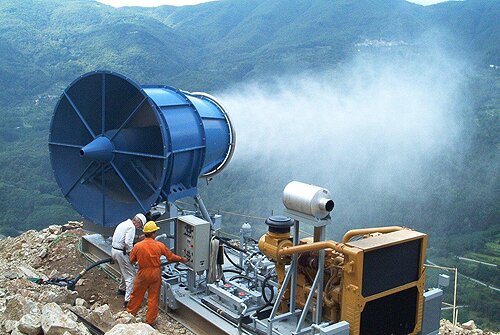Dust Control Systems; What Are The Benefits Of Particulate Scrubbers
Particulate scrubbers are a well-known traditional method for the removal of fine dust particles in dust control systems. Particulate scrubbers are often installed to remove fine particles from volatile, corrosive or hazardous gas streams or ones that contain solid materials that are difficult to handle. For decades, these have been widely used throughout the chemical industry providing the following benefits to their users.

Advantages of Particulate Scrubbers
There are many associated advantages and benefits with particulate scrubbers such as;
- They collect coarse and fine particulate, including particulate less than 1 micron and particulate that is high in moisture or sticky.
- The scrubbers with a quench section (evaporative cooler) are able to accommodate high temperature gas streams, including those emanating from sintering, casting, incineration, pyrolysis and glass manufacturing.
- Particulate scrubbers in dust control systems may be utilised for applications with high dust loadings.
- They are ideal to use for variable gas flows.
- Particulate scrubbers are continuously wet, and are therefore not susceptible to plugging, clogging, and scaling or dry/wet line build-up.
- Collection efficiency for particulate scrubbers ranges above 90%, depending on whether they have 3, 4 or 5 stages.
- Slurries that contain high concentrations of valuable or solid material may be recycled in particulate scrubbers.
- Dust control systems containing particulate scrubbers feature a mist eliminator module that provides separation.
- Dust extraction systems running on particulate scrubbers are custom manufactured in capacities to 300,000 cfm.
- They offer high removal efficiency in a cost effective solution and are able to accommodate horizontal or vertical scroll outlets.
- They can be custom engineered to provide you with the right answer to all your pollution and emission control needs.
Features of Particulate Scrubbers
Particulate scrubbers are primarily used for particulate removal and are recommended for exhaust streams containing particles with defined size distribution. These scrubbers are able to achieve moderate absorption of reactive and soluble gases. Particulate scrubbers provide proper gas acceleration and liquid droplet shearing to ensure adequate contact between the recycled liquid and the particulate for impingement.
Particulate scrubbers come in a variety of models that are designed to meet your unique dust control requirements be they particulate removal, coarse particulate removal, gas absorption or variable exhaust volumes. Some scrubbers allow for the adjustment of pressure drop and throat size via means of a movable internal bullet. Others have a low gas velocity sensitivity that allows for effective scrubbing of gas streams that have a high concentration of contaminants. Certain particulate scrubbers are ideal for use in foundry and mining industry applications as they can safely remove coarse solids such as crushed rock and sand.
Particulate scrubbers are widely used for the collection of industrial emissions particulate. These are ideal for applications such as laboratory gas and pharmaceutical manufacturing scrubbing where collection efficiencies need to be high, or where energy cost minimisation is critical. With the right particulate scrubber, it is possible to continuously eliminate particulate down to 0.1 microns or even as large as 300 microns, at efficiencies that exceeds 99.8%.
By Sarah, an article writer interested in topics relating to technology and engineering, exploring using particulate scrubbers and other dust extraction systems







